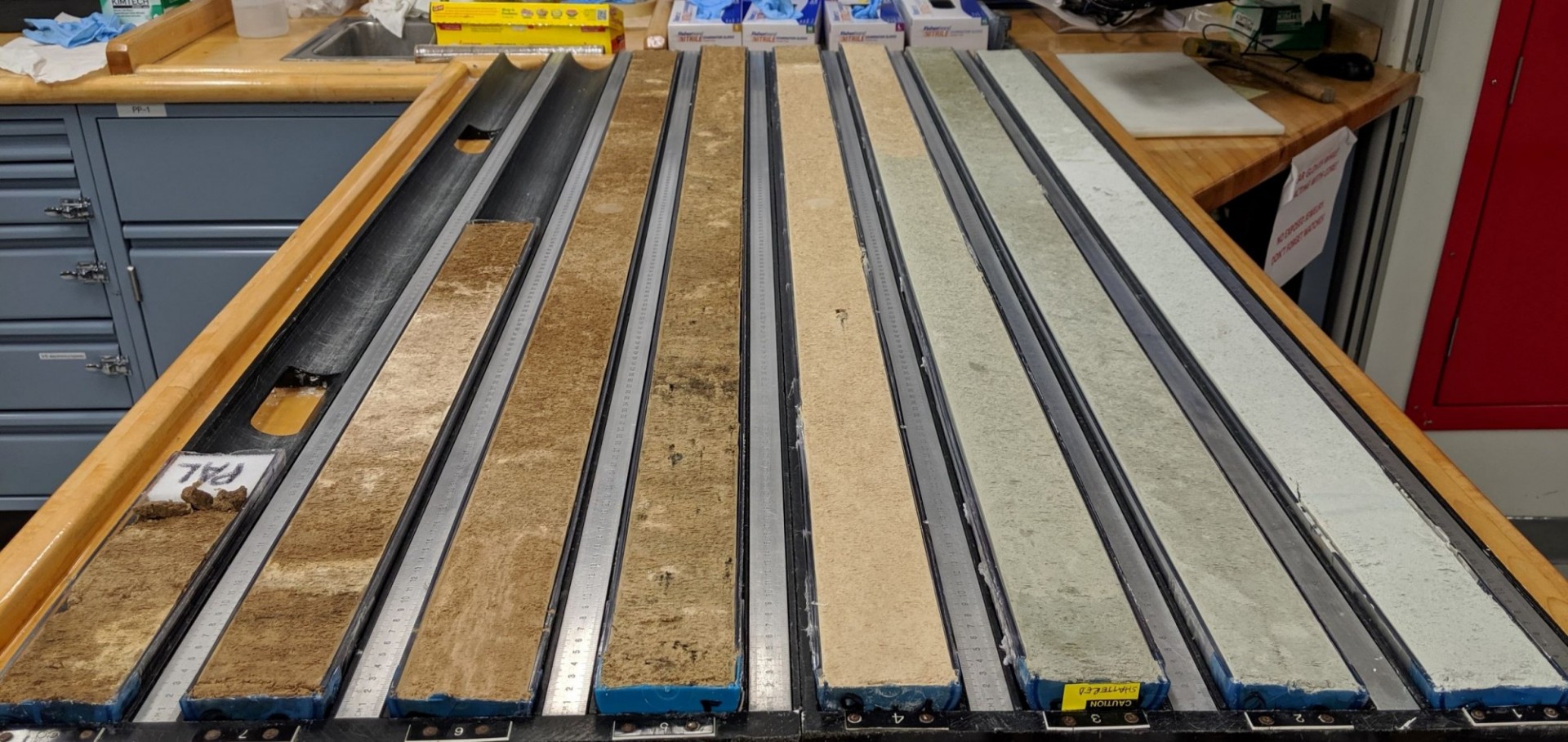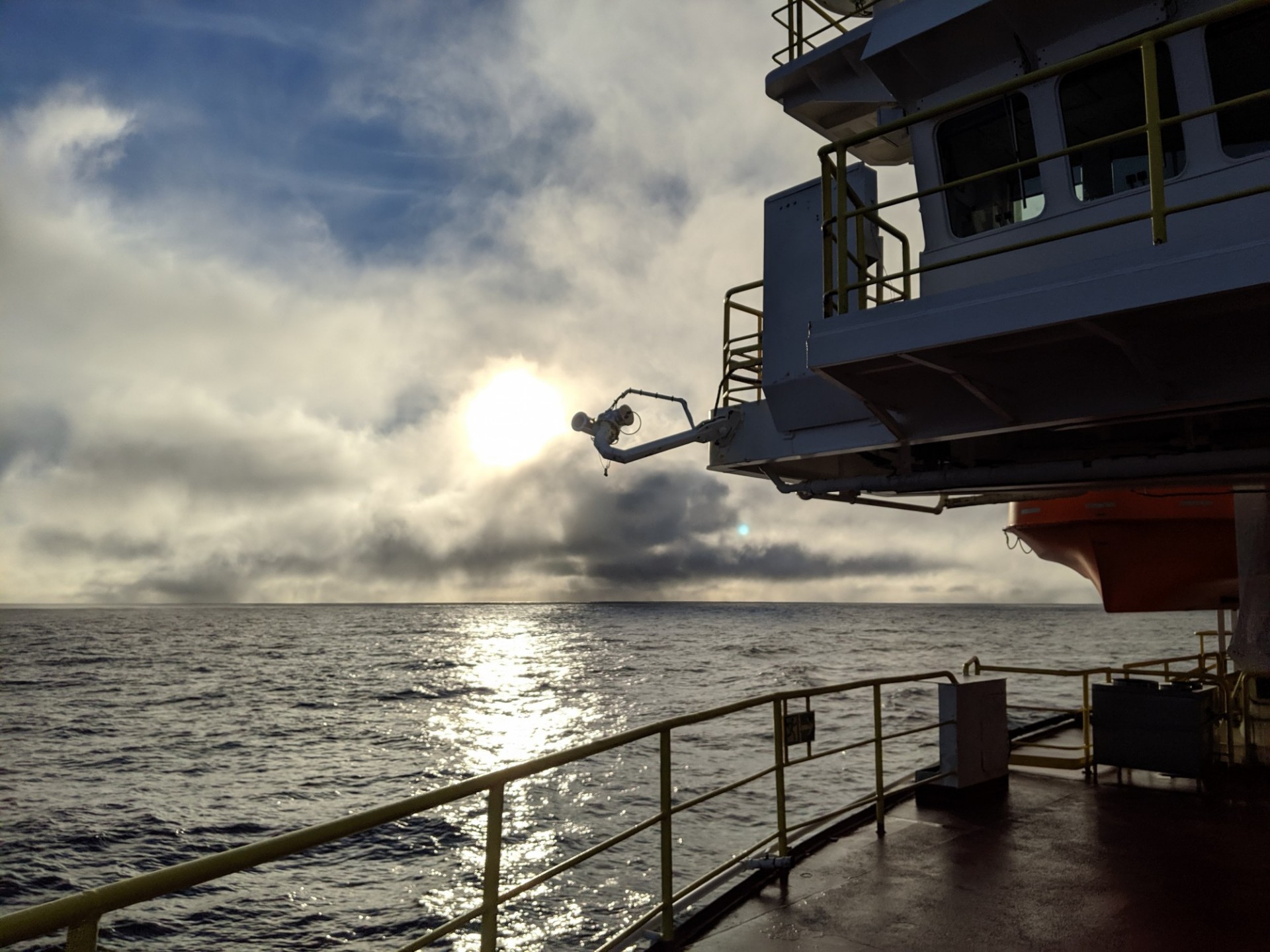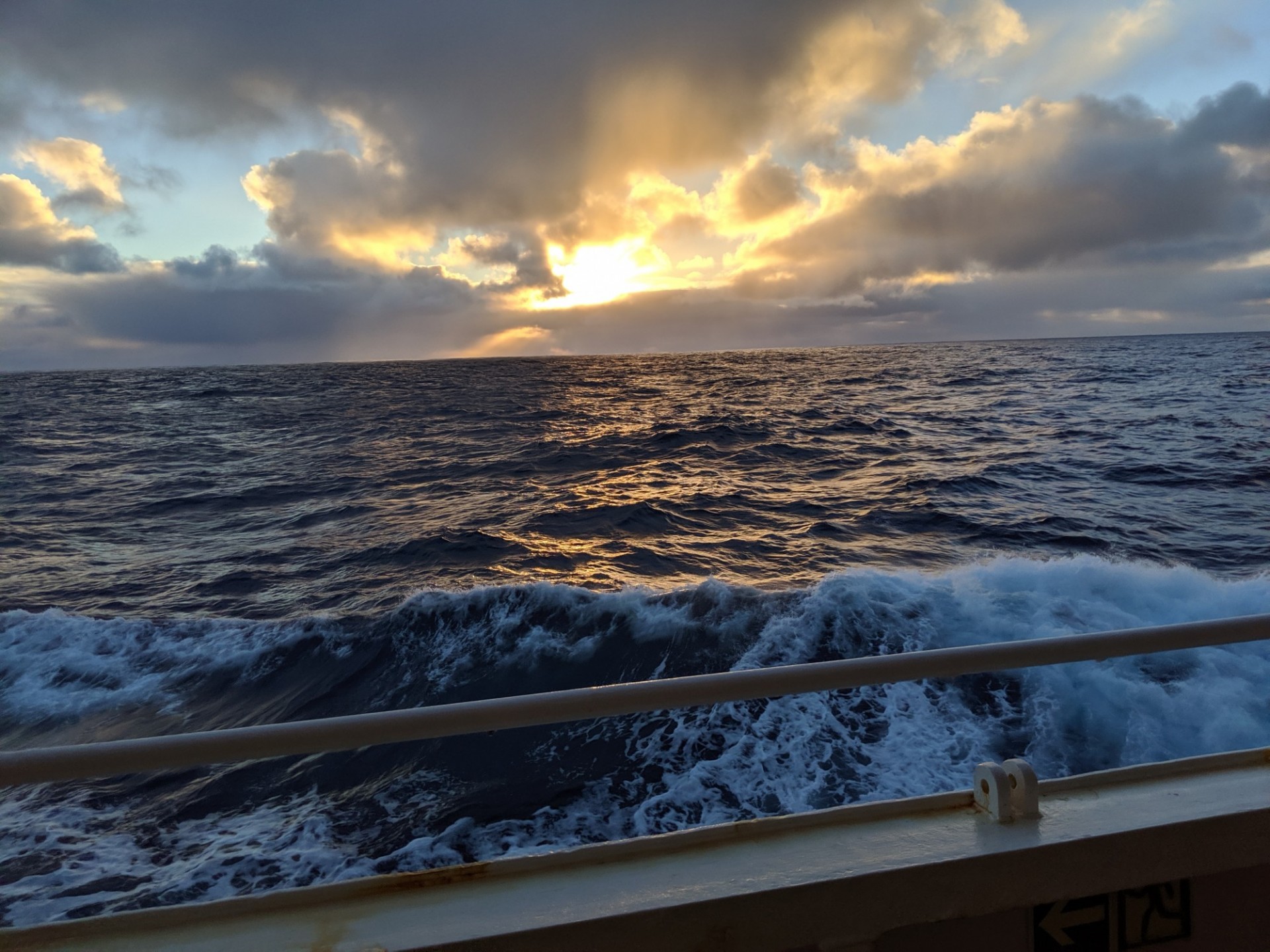I am an isotope geochemist who uses noble gas analyses and complementary geochemical tracers in the geologic record to evaluate interactions between the oceans, atmsophere, ice sheets, and solid Earth over a range of past climatic conditions.

Marine biogeochemistry:
Biologic productivity in the surface ocean plays an important role in the global carbon cycle by converting atmospheric carbon dioxide into organic matter, which can then be sequestered into the deep ocean. I use marine sedimentary records to investigate how variations in nutrient delivery to the ocean have affected this biologic carbon pump in the past (across the Plio-Pleistocene) and the way such biogeochemical cycles feed back into the global climate system.
As part of this work, I participated in IODP Expedition 383 to the Pacific Southern Ocean in summer of 2019. During our two months at sea on the R/V JOIDES Resolution, we collected sedimentary records spanning the past ~8 million years of Earth's climate history. Back in the lab, we will use these records to evaluate the importance of the marine biologic pump over intervals in which Earth was colder than today, as well as those when Earth significantly warmer than modern conditions.
Continental dust emissions in a changing climate:
Sedimentary archives of dust delivery to the open ocean can be used to investigate changes in continental aridity, atmospheric circulation, mineral aerosol burden, and nutrient delivery to the marine environment over a wide range of climatic conditions. I combine measurements of constant flux proxies (such as extraterrestrial helium-3 and excess thorium-230) with continental dust indicators (like terrigenous helium-4 and thorium-232) to generate long-term records of dust deposition and unlock dust's secrets over past intervals of major climatic variability.

Climate controls on submarine volcanism:
Large scale continental glaciations transfer large masses of water from the oceans onto land, changing sea level by over 100 meters (>300 ft!) between the interglacial and glacial periods of the late Pleistocene. Such water mass transfers change the overlying pressure above mid-ocean ridges and may influence the melt production and hydrothermal circulation occurring at submarine volcanic centers.
Do rapid sea level changes affect the thermal and chemical output of submarine hydrothermal systems? We are working to address this question using trace element concentrations (including Fe and Cu, among others) and constant flux proxy-derived sediment accumulation rates (determined from extraterrestrial helium-3 and excess thorium-230) in marine sediment cores from mid-ocean ridges to build records of hydrothermal variability over Pleistocene glacial cycles.
We are additionally interested in how hydrothermal activity may introduce uncertainties to the marine sedimentary proxies that we employ to reconstruct past climate. Check out our new GCA paper for more information on the influence of hydrothermal scavenging on sediment flux records derived using excess thorium-230.
Ice sheet stability:
I am interested in the stability of Antarctic ice sheets over past periods of climatic change and their implications for future ice sheet behavior in response to modern warming. We are currently working to constrain the behavior of the West Antarctic Ice Sheet over the past ~5 million years using cosmogenic exposure dating of rock samples collected above and below the ice sheet in the Trans-Antarctic Mountains.
Pourret, O., Middleton, J.L., Ibarra, D.E., Irawan, D.E., Rouff, A., Anand, P., Tripati, A., Riches, A.J.V., and Dosseto, A. (2021) Diversity among editorial boards of Elements and other selected geochemistry, cosmochemistry, mineralogy and petrology journals. Elements, DOI: 10.2138/gselements.17.3.150.
Pourret, O., Anand, P., Arndt, S., Bots, P., Dosseto, A., Li, Z., Marin Carbonne, J., Middleton, J., Ngwenya, B., and Riches, A. (2021) Diversity, Equity, and Inclusion: Tacking under-representation and recognition of talents in Geochemistry and Cosmochemistry. Geochimica et Cosmochimica Acta 310, 363-371.
Costa, K.M., Hayes, C.M., Anderson, R.F., Pavia, F.K, Bausch, A., Deng, Feifei, Dutay, J.-C., Geibert, W., Heinze, C., Henderson, G., Hillaire-Marcel, C., Hoffman, S., Jaccard, S.L., Jacobel, A.W., Kienast, S.S., Kipp, L., Lerner, P., Lippold, J., Lund, D., Marcantonio, F., McGee., D., McManus, J.F., Mekik, F., Middleton, J.L., Missiaen, L., Not, C., Pichat, S., Robinson, L.F., Rowland, G.H., Roy-Barman, M., Tagliabue, A., Torfstein, A., Winckler, G., and Zhou, Y. (2020) 230Th normalization: New insights on an essential tool for quantifying sedimentary fluxes in the modern and Quaternary ocean. Paleoceanography and Paleoclimatology, 35, e2019PA003820.
Middleton, J.L., Mukhopadhyay, S., Costa, K.M., Pavia, F.J., Winckler, G., McManus, J.F., D'Almeida, M., Langmuir, C.H., and Huybers, P.J. (2020) The spatial footprint of hydrothermal scavenging on 230ThXS-derived mass accumulation rates. Geochimica et Cosmochimica Acta 272, 218-234.
Jacobel, A.W., Anderson, R.F., Winckler, G., Costa, K.M., Gottschalk, J., Middleton, J.L., Pavia, F.J., Schoenfelt, E.M., and Zhou, Y. (2019) No evidence for equatorial Pacific dust fertilization. Nature Geoscience 12, 154.
Costa, K.M., Anderson, R.F., McManus, J.F., Winckler, G., Middleton, J.L., and Langmuir, C.H. (2018). Trace element (Mn, Zn, Ni, V) and authigenic uranium (aU) geochemistry reveal sedimentary redox history on the Juan de Fuca Ridge, North Pacific Ocean. Geochimica et Cosmochimica Acta 236, 79-98.
Middleton, J.L., Mukhopadhyay, S., Langmuir, C.H., McManus, J.F., and Huybers, P.J. (2018) Millennial-scale variations in dustiness recorded in Mid-Atlantic sediments from 0 to 70 ka. Earth and Planetary Science Letters 482, 12-22.
Costa, K.M., McManus, J.F., Middleton, J.L., Langmuir, C.H., Huybers, P.J., Winckler, G., and Mukhopadhyay, S. (2017). Hydrothermal deposition on the Juan de Fuca Ridge over multiple glacial-interglacial cycles. Earth and Planetary Science Letters 479, 120-132.
Middleton, J.L., Langmuir, C.H., Mukhopadhyay, S., McManus, J.F., and Mitrovica, J.X. (2016) Hydrothermal iron flux variability following rapid sea level changes. Geophysical Research Letters 43, doi:10.1002/2016GL068408.
Middleton, J.L., Ackert, R.P., and Mukhopadhyay, S. (2012) Pothole and channel system formation in the McMurdo Dry Valleys of Antarctica: New insights from cosmogenic nuclides. Earth and Planetary Science Letters 355-356, 341-350.
I am committed to the promotion of diversity, equity, and inclusion at Lamont and in the wider geoscience and STEM communities. To support these efforts, I serve on the Geochemical Society's committee for Diversity Equity and Inclusion (DEI) and am active in ongoing DEI efforts on the Lamont campus.
Check out the LDEO Office of Academic Affairs and Diversity for a compiled list of resources regarding the problems of discrimination in STEM and for information regarding specific diversity and inclusion efforts taking place at the Lamont-Doherty Earth Observatory.
Ocean of Extremes - Check out our Lamont field blog (with Gisela Winckler and Julia Gottschalk) from IODP Expedition 383 to the Pacific Southern Ocean during summer of 2019

